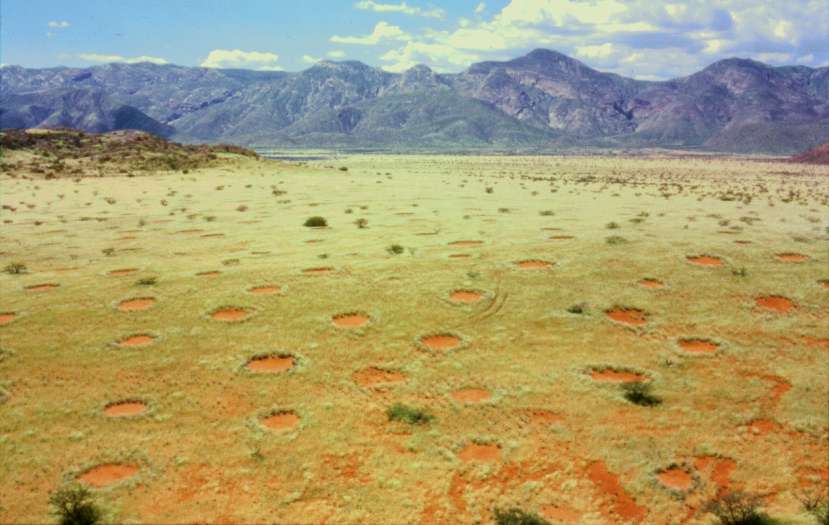Research finds mysterious fairy circles exist beyond Namibia and Australia
For years, mysterious circular patterns of bare soil surrounded by rings of vegetation have baffled scientists. Until recently, they were thought to exist exclusively in parts of Namibia and parts of Australia, but new research has found them elsewhere.
It turns out fairy circles are more common than previously thought, present in more than 250 locations across 15 countries and three continents, according to a recent study appearing in the journal PNAS.
This discovery could provide insight into the environmental factors that create fairy circles.
"Our study provides evidence that fairy-circle are far more common than previously thought, which has allowed us, for the first time, to globally understand the factors affecting their distribution," Manuel Delgado Baquerizo, leader of the IRNAS-CSIC BioFunLab and co-author of the study, said in a statement.

A fairy circle in Namibia. (Thorsten Becker/Wikipedia) CC BY-SA 2.0
AI-powered research
With the assistance of artificial intelligence-based models, a team of researchers led by Emilio Guirado, the principal investigator at the Laboratory of Ecology of Arid Zones and Global Change at the University of Alicante (UA), analyzed satellite imagery, identifying 263 sites across the globe that host patterns similar to the fairy circles observed in Namibia and Western Australia.
Understanding the environment
Researchers found a strong association between specific soil and climate characteristics and fairy circles.
Low nitrogen content in the soil and an average annual rainfall of less than 200 mm were among the key indicators.
Jaime Martínez-Valderrama of the EEZA-CSIC said in a statement the rainfall could be a "particularly relevant factor" because the widespread use of groundwater in arid environments, including deserts, could disrupt fairy circle formation.
Ecosystem stability
The study compares the ecological health of environments with fairy circles to other ecosystems, finding "greater stability" in areas with the circles.
Researchers say the findings mean fairy circles could serve as indicators of ecosystem degradation due to climate change, similar to other spatial patterns in arid zones.

Fairy circles in Namibia's Marienfluss valley. (Thorsten Becker/Wikipedia) CC BY-SA 2.0
Looking ahead
The study expands our understanding of the distribution of fairy circles and highlighting their potential and possible use as indicators of environmental change in increasingly fragile ecosystems.
"Our work also paves the way for further research on the functional implications of these vegetation structures, which make ecosystems more stable and may help them to avoid tipping points associated with climate change," the authors write.
Header image: File photo of fairy circles in Namibia (Dr. Stephan Getzan)

